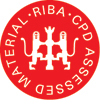Significant uses of nanotechnology have surfaced in the last few years with applications for architectural design and the construction of built environments.
In October 2011, the Nobel Prize for Physics was awarded to two researchers from Manchester University for their work on graphene. But if, like much of the world, you’re left wondering just what graphene is, and why it deserves a Nobel Prize, then help is at hand.
Graphene, as the Nobel winner Andre Geim says: "is stronger and stiffer than diamond, yet can be stretched by a quarter of its length, like rubber. Its surface area is the largest known for its weight." Needless to say, graphene holds tremendous promise for the future as does titanium dioxide (TiO2) and carbon nanotubes. It may take building enclosure materials (coatings, panels and insulation) to dramatic new levels of performance in terms of energy, light, security and intelligence.
The programme contains several interviews with experts.
Key learning points:
- What is nanotechnology and what are its opportunities?
- An overview of graphene or titanium dioxide and/or carbon nanotubes (not exclusively), explaining the materials and the potential
- New themes in robotics; stereolithography
- Some thermal and structural benefits (aerogel, carbon)
- Examples of new products
About the contributors
Rachel Armstrong, author of Living Architecture. She innovates and designs sustainable solutions for the built and natural environment using advanced new technologies such as, Synthetic Biology – the rational engineering of living systems - and smart chemistry. Her research prompts a re-evaluation of how we think about our homes and cities and raises questions about sustainable development of the built environment. She creates open innovation platforms for academia and industry to address environmental challenges such as carbon capture and recycling, smart 'living' materials and sustainable design.
Viv Regan is Assistant Director of education charity, NGO, NVYO WORLDwrite. She is an experienced journalist working in Africa, India and the UK and is also a producer at Chew on it productions. She is a freelance assessor of youth programmes and co-director of the educational consultancy ME-WE.
Timandra Harkness is a Science Educator and communicator and director of Fame Lab at Cheltenham Science Festival. She has written for newspapers and magazines including the Daily Telegraph, WIRED and BBC Focus, Men’s Health and The Journal of the Royal Statistical Society on science, technology, statistics and motoring.
John Johansen, architect and author. In 1948, Johansen settled down and established his own practice in New Canaan, Connecticut to accompany four of his other colleagues, Marcel Breuer, Philip Johnson, Landis Gores, and Eliot Noyes. From 1955 to 1960, he was the adjunct professor at Yale School of Architecture, which had happened to become a vigorous center for modernism. At the time of his death, he was married to Ati Gropius Johansen, noted art educator and daughter of Walter Gropius.
 Disclaimer: NBS TV programmes are the intellectual property of RIBA Enterprises and it shall be a breach of this right to copy, or in any way exploit commercially or show in public any of the programmes without the express permission of RIBA Enterprises.
Disclaimer: NBS TV programmes are the intellectual property of RIBA Enterprises and it shall be a breach of this right to copy, or in any way exploit commercially or show in public any of the programmes without the express permission of RIBA Enterprises.
